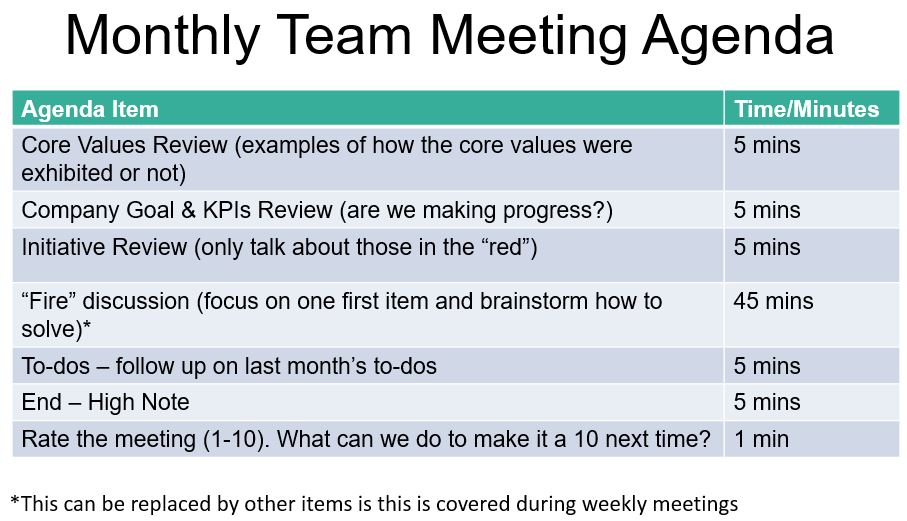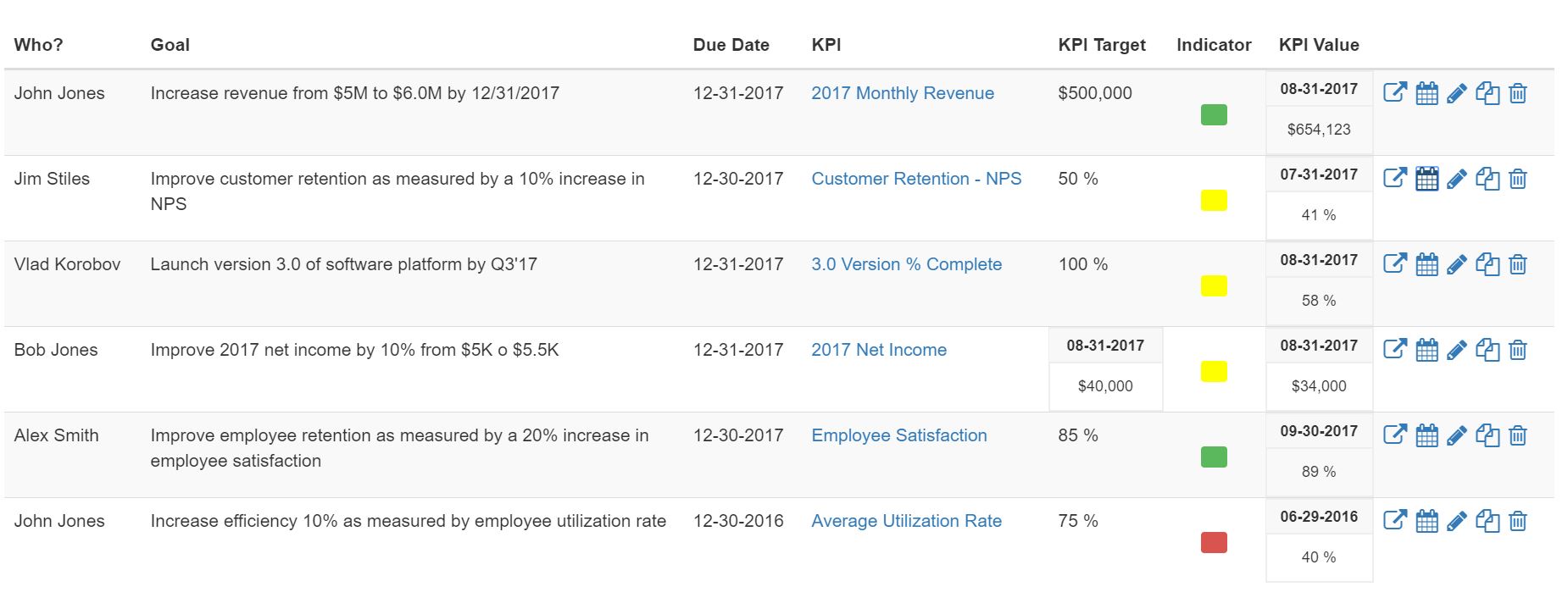The fastest growing and most profitable companies perform some type of strategic planning each year which helps them determine what to focus on.
Every company has limited resources which must be maximized and focuses in order to be successful.
Those resources are focused by converting a strategic plan into SMART company goals which act as milestones, driving the company one step closer to achieving their vision.
There is about 3 months or 14 weeks left to 2017, how are you doing?
How is your company tracking against those goals that you set at the end of 2016? Did you ever translate your strategic plan into specific goals with measurables (KPIs) and clear accountability?
Maybe you didn’t do any strategic planning in 2016.
Don’t give up. It’s not too late. In fact, communicating the company goals to your employees is a critical part to driving employee satisfaction and engagement.
Here are 4 steps you can take NOW to drive results in the remaining weeks of 2017.
Make Sure Your Company Goals Are Clear
The message here is simple. Ask yourself the question, “Are the company goals (priorities) 100% clear to everyone in the organization”? If you answer, “No”, let’s change that.
I would assume you’re not happy with just standing still. You want your company to move forward, to gain market share, to increase revenue, to have more dedicated employees or more loyal customers. If your priorities are not 100%, valuable resources (your employees time) will be wasted.
To illustrate, let’s pick a goal – for example, “Increase revenue by 20% Y/Y”.
Define A KPI, Target, Who’s Accountable And Threshold For Each Goal
Next, define the KPI (key performance indicator) for each goal. If you’re not sure what to use as a KPI, just ask yourself, “how will I know if this goal is achieved?” If you’re still having trouble, it may be that the goal you’ve chosen to too vague. It’s not SMART or Specific enough.
Back to our emample goal of to “Increase revenue by 20% Y/Y”
Assign a KPI to the goal
We’ll use the KPI “Revenue”. If your revenue was $10M last year and you’d like to increase revenue by 20% Y/Y, your annual goal would be $12M.
Let’s assume your monthly goal is $1M, $12M/12 = $1M
Next determine who’s ultimately responsible for achieving the goal.
VP of Sales most likely. By the way, if this point is not clear, you will have a very difficult time reaching your goal. There must be someone who is willing to raise their hand and take responsibility for each goal.
Determine some red, yellow and green criteria.
Let’s assume anything below $990K is yellow and below $900K is red. This is something you can work out with the CFO or VP of Finance.
Note: You probably want to create some leading indicators for your revenue goal. You can read about how to do that here.
Create A Monthly Meeting Rhythm To Review Each Goal With The Entire Team
Once you’ve defined your goals and put some measurement criteria in place, you need to review these with the team.
At first, it can feel a bit scary sharing all this information with the entire team, but I truly believe people are smart and creative. You’ll be surprised at the things your people come up with (especially when you miss your goal).
You want everyone to understand the numbers of your business so they can help you react.
Remember the employee engagement problem? Sharing these goals is a step towards purposely engaging your employees into the details of the game so they can help.
Here’s a simple meeting agenda you can use:

We’ve developed an easy to use dashboard where your team can view the status of your company goals, the KPI and whether the KPI is red, yellow or green. Just click the button at the bottom of this post to learn more.

Bonus: Next Time Goals Are Determined, Involve As Many Team Members As Possible
This is probably the biggest driver of engagement. There is also a very practical aspect to this. Getting as many perspectives as possible ensures you are focused on the RIGHT things.
When you go through your next strategic planning process, get as much feedback as possible, especially from the people that are going to implement the plan.
What really frustrates employees is that owners and managers set priorities without consulting them, the ones that are going to implement the plan. I’ve heard employees complain that they feel leadership has lost touch with the “real” problems that need to be addressed.
It takes longer, but be sure to involve as many members of the team as possible.
So How Does All This Actually Save You Thousands Or Even Tens Of Thousands?
Remember how clarity around company goals is one of the key drivers of employee engagement?
Let’s consider that you have a $50K/year employee who is not engaged. Chances are pretty good that you do, since studies suggest that only 33% of all employees are engaged. If you have a 30-person company that means only 10 people are engaged and 20 are “at risk”. Let’s say you lose only one of your 30 employees or 3% (btw the average employee churn rate is ~ 15%).
Recruiting and training new employees can cost 16%-200% of an employee’s annual salary to replace. A modest figure would be $10K for the $50K employee.
You could head that problem off at the pass by defining your goals and sharing them with your team. This isn’t the only fix, but would go a long way toward engaging your employees and preventing employee churn.
What if those disengaged employees don’t leave, but stay. This is bigger problem. This employee is affecting other employees and even interacting with your customers. You get the picture. It’s a big problem.
Need help translating your strategic plan into goals you can share with your entire company? Sign up for a free demo of our software by clicking the button below and let us help you (it’s a lot less expensive that you think and could save you $1000s).
{{cta(‘b9a3ed81-299b-48e2-8fb9-4e9557ca62b9’)}}